Kindergarten Design
Kindergarten Classroom Design
what centers should be in a kindergarten classroom
Kindergarten classroom design has an important impact on preschoolers, what does a kindergarten classroom look like? Preschoolers are a key stage in the development of human social behavior, emotion, character, cognition, etc. It is also the fastest and most plastic period in a person’s life. The kindergarten is an important living space for children. The environment of the kindergarten is very important for the growth of children and affects the healthy development of children. Therefore, the design of kindergarten classroom design should also be given more attention.
Designing a kindergarten classroom is an important task that requires careful consideration of the needs of young children. It is essential to create a space that is safe and conducive to learning. When designing a kindergarten classroom, it is important to consider the layout, ideal classroom design for kindergarten, and floor plan in order to create an environment that encourages exploration and creativity. By taking into account the age group of students, their individual needs, and the activities they will be doing in the classroom, teachers can create a space that meets all of their educational requirements.
Kindergarten classrooms should be designed to maximize learning potential and provide a safe space for children to explore and develop. It should be tailored to the needs of the students, taking into consideration their age group and interests. A well-thought-out design layout should also consider how furniture will be arranged, what colors would work best, and which materials are most suitable for the classroom environment. With these tips in mind, we will discuss some of the best kindergarten classroom design ideas that you can use to create an inviting learning space for your students.
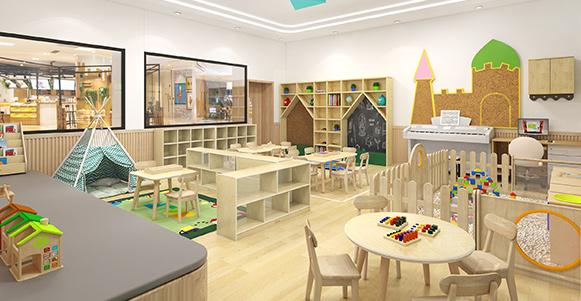
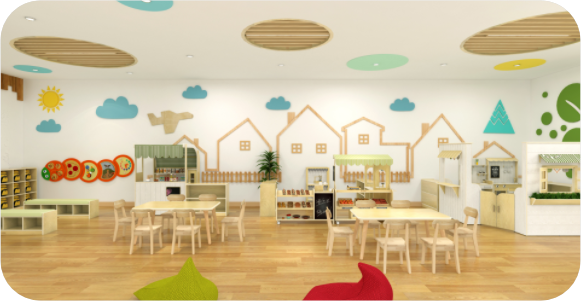
How to Decorate a Kindergarten Classroom
The kindergarten is essentially a “space for children’s life, growth, and entertainment”. It is a comprehensive place for children to develop cognition, emotion, social connection, and individual skills. How to design a kindergarten classroom, fully explains the importance of children’s space to the development of children. In order to create a good learning environment for children, more attention should be paid to the design of kindergartens to meet parents’ needs for kindergartens.
Color matching is very important
At first, children intuitively perceive the world through sensory stimuli such as color, shape, and sound. As kindergarten is the first educational space they are exposed to, the choice and collocation of colors have become particularly important. With similar or similar colors, the space looks overall and harmonious. Contrasting color matching has a strong visual shock without losing the sense of beauty.
The design theme is critical
In kindergarten design, design theme and style are very important. Only when fully integrated with the educational concept, the kindergarten design has a soul. The design that upholds the concept of nature allows children to discover their hearts and return to nature. Incorporating Chinese style into the design of kindergartens can promote traditional culture. The style of the military training theme aims to cultivate children’s good habits of being punctual and strict in self-discipline.
Careful consideration of safety issues
Children are young and immature physically and psychologically. Children are more active and active, have poor self-control ability, and have a weak sense of self-protection. Therefore, children’s safety is the first issue, and only when children develop healthily. On this basis, kindergarten education is meaningful. The design mostly uses soft curves and arcs, which are lively to the children’s nature of running and jumping, reducing potential safety hazards.
The functional partition must be clear
Partitioning is not only convenient for management but also can satisfy children’s study and life in many aspects. The reception hall of the kindergarten is an important area for displaying educational concepts and decorative styles. Baking classrooms, pottery rooms, and science and technology centers are partitioned according to the actual space environment so that they are functionally independent and beautiful.
The focus of education cannot be biased
Suhomlinski once said, “Let every wall of the school speak.” Therefore, in the decoration design of the kindergarten, education, the central focus, must not be ignored. The arrangement of the book corner can create a good reading atmosphere, cultivate children’s interest in reading, and develop good study habits. The open reading area and the world map on the wall make full use of the space and broaden the knowledge of children.
Kindergarten Classroom Design Ideas
Early childhood education has always attracted much attention. Early childhood education includes not only educational concepts but also the environment. Therefore, best kindergarten classroom design is very important for children.
Garden Site Selection
The site selection is the first step to open a kindergarten. The site selection of the kindergarten should choose a place with stable geological conditions, a good surrounding environment, sufficient sunshine, and convenient transportation. At the same time, it should be far away from places that are not conducive to the healthy growth of children, such as entertainment venues.
Design Style
Designing a toddler classroom must be combined with the educational philosophy and culture of the kindergarten. The overall style should fit the psychological characteristics of children, taking into account children of different ages. The layout form should be lively and changeable, and the traffic flow should be simple and smooth, and sufficient green land should be reserved.
Space Design
Kindergarten space generally includes entrances and exits, halls, classrooms, activity rooms, toilets, and other areas. With the innovation of the kindergarten education concept, the design concept of the kindergarten is also improving. The space design should be children-oriented, and space should be planned and designed reasonably, and the details should be handled properly. Ensure the safety of children in the kindergarten and provide them with a healthy and safe environment.
Decoration
The overall decorating a kindergarten classroom should be based on the physical development and acceptance of the child. Bright and bright colors and smooth lines can arouse the enthusiasm of the child, which is of great help to the growth of the child.
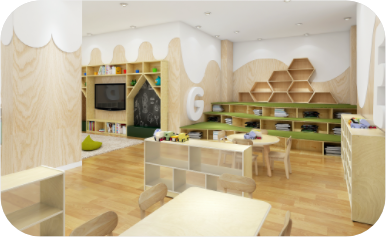
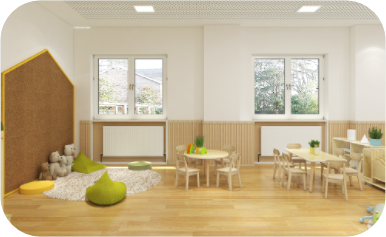
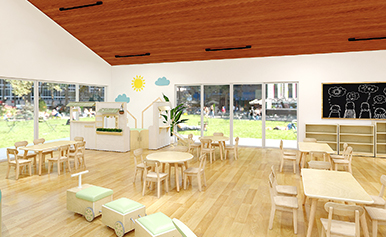
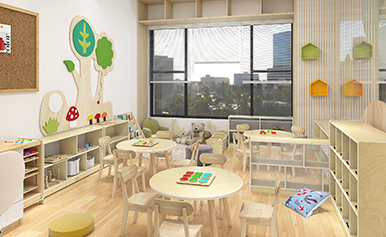
Kindergarten Classroom Design Layout
The layout method and design concept of the overall environment of the kindergarten classroom. Learning how to decorate a kindergarten classroom can be a fun and exciting process! When it comes to decorating a kindergarten classroom, it’s important to create a space that is both engaging and functional for young children. Bright colors, fun patterns, and playful decor can help make the classroom a welcoming environment.
1: Integrity
Each section in the kindergarten classroom must have specific content planning and usage methods. For example, the main wall in front is mainly used for multimedia teaching, teaching display, and so on. The wall at the back can be used for class construction, such as displaying some children’s daily works, paper-cutting, and painting. The sidewall can be used for children’s daily behavior and so on.
2: Aesthetics
In addition to ensuring the integrity of each section in the kindergarten classroom, it is also necessary to ensure aesthetics. For example, in the overall layout, attention should be paid to orderliness and symmetry, so that children have a good visual appreciation environment. In addition, the height collocation should also match the height of the children, so that the children can gain knowledge from the interaction with the wall.
3: Vividness
Wall decoration should highlight vividness and beauty. The value of wall decoration itself is not only aesthetics but also educational. While stimulating children’s interest, let them learn to appreciate and recognize beauty. For example, some landscape paintings, color paintings, etc., can effectively help children improve their cognition.
4: Interactivity
The interactivity of the wall decoration is very necessary, we can establish the theme according to the children’s age and interest. According to the changes of the seasons, the themes of spring, summer, autumn, and winter can be set, and the themes of animals, plants, characters, etc. can be set according to education.
5: Interesting
Children’s focus is more on the fun. Therefore, in the design process, attention should be paid to fun, to stimulate children’s interest and desire for exploration, and then to integrate education to meet the layout requirements of the classroom.


Kindergarten Furniture
What every kindergarten classroom needs
a. The wood material is double AA grade poplar core birch surface multilayer solid wood board, which is not easy to deform and crack and has good flatness
b. Board surface (double-sided): adopt Baichuan UV paint (matte, reduce reflection surface, protect children’s eyesight under strong light environment) automatic production line processing, 2 bottoms (rough grinding + fine grinding), 2 sides (top paint) ), 2 films (the film protects the paint surface during transportation and processing), the hand feels delicate, UV paint is cured by ultraviolet light, with higher hardness and longer service life.
c. Corner treatment: A. Industry-standard: According to the requirements of China’s first mandatory national standard for children’s furniture “General Technical Requirements for Children’s Furniture”, the dangerous outer corners of the product below the ground height of 1600mm should be rounded and inverted. The radius of the circle is not less than 10mm, or the length of the rounded arc is not less than 15mm; B: Processing technology: 2 bottoms and 2 sides are used for finishing (2 bottoms are water-based paint closed bottoms, 2 sides are food-grade wood wax oil), and fine touch.
How to Set up a Kindergarten Classroom
Designing a Classroom Layout
Designing a kindergarten classroom can be a fun and exciting project, but it’s important to create a space that is both functional and inviting for young learners. Tailored your kindergarten classroom dimensions into a fun and inviting space with these unique design ideas. With a few creative kindergarten classroom design ideas, you can transform your classroom into a colorful and engaging environment that will inspire your students to learn and explore.
Here are some tips to help you design the perfect different areas in kindergarten classroom, from cozy reading nooks to interactive learning centers, your students will love it!
1. Reasonably arrange in accordance with the requirements of the teaching plan and educational goals: The arrangement of the kindergarten environment plays a vital role in the growth of children. Therefore, when arranging the classroom environment, it is often necessary to start from the children’s development goals and the actual development level of the children in the class, and choose the corresponding layout content.
2. The layout of the environment must have a global concept and an overall concept: when a child enters the activity room or sleeping room, the first thing that enters the line of sight is the furnishings and decorations of the activity room or sleeping room. Indoor furnishings should be neat and orderly, fresh and beautiful, and convenient for children’s activities.
3. The imaginative environment can satisfy the children’s desire to participate in the arrangement of the environment and enable them to experience the joy of success. In addition, some themes can be selected according to the cognitive ability of children, such as “mysterious world”, “beautiful world”, “outer space” and so on.
Designing a Kindergarten Classroom
Best Practices and Ideas
A well-designed kindergarten classroom can make a huge difference in a child’s learning experience. Discover the best practices and ideas for designing a preschool classroom.
Designing a kindergarten classroom requires careful consideration of the needs and abilities of young children. From the layout and organization of the space to the choice of furniture and materials, every aspect of the classroom can impact a child’s learning experience. In this guide, we’ll explore some best practices and ideas for how to set up a kindergarten classroom that fosters creativity, exploration, and growth.

- Make it spacious. Provide plenty of open space for kids to move around, play and explore. Kindergarteners have lots of energy and short attention spans, so an open classroom layout is important.
- Define separate areas. Designate areas for different activities like reading, art projects, block building, dramatic play, etc. Use furniture, rugs, and shelf units to define the separate areas. This helps kids stay focused on one activity at a time.
- Keep it well-organized. Use labeled bins, drawers, trays, and cabinets to keep everything tidy. An organized space helps kids develop organizational skills and independence. They can easily find what they need and return things to the right place.
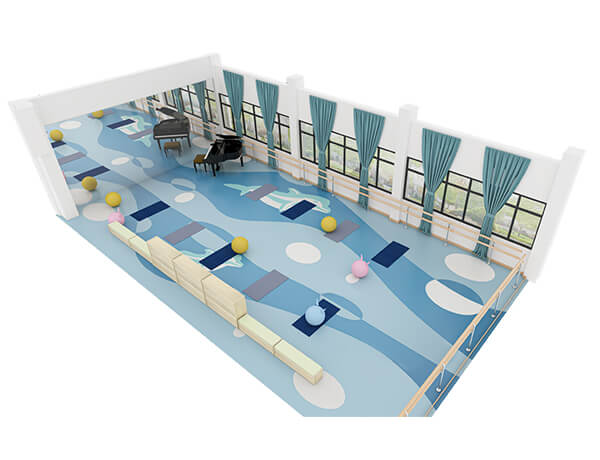
- Include cozy spaces. Have a cozy area with pillows, cushions, or bean bag chairs where kids can relax, read books or just unwind. A cozy space gives them the option to rest when they need it.
- Add lots of storage. Include plenty of storage space for backpacks, lunch boxes, jackets, books, art supplies, toys, etc. Add bike racks, cubbies and closets conveniently located around the classroom. Keeping the clutter out of sight will make the room more open and spacious.
- Use engaging decor. Decorate walls with colorful educational displays, artwork, maps, alphabet letters, numbers, etc. An engaging environment surrounds kids with lots to look at and talk about. It stimulates their development and sparks their imagination.
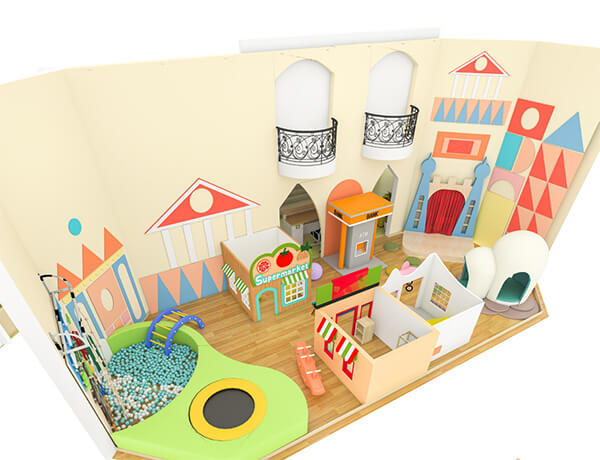
- Make it kid-friendly. Choose furniture, fixtures, shelves, lighting, flooring, etc. that is durable, easy to clean, and child-size/level appropriate. Round table edges, non-slip rugs, sturdy chairs, etc. help create a safe space for kids.
- Natural lighting. Let in plenty of natural light whenever possible. Open the blinds and add lamps to brighten the space. Natural light has a positive impact on mood and learning.
- Flexible layout. Use a layout that allows for flexibility and rearrangement. Move furniture and fixtures around from time to time to keep the space interesting and encourage different types of activities or play. A flexible space supports creativity.
Design for Kindergarten Classroom: Tips and Tricks from Experts
Kindergarten classroom interior design can be overwhelming, but with the right guidance, it can be a breeze. Modern kindergarten classroom design can be a fun and exciting project, but it can also be overwhelming if you don’t know where to start. In this comprehensive guide, you’ll learn from experts in the field about the key elements to consider when interior design kindergarten classroom that is both functional and engaging for young learners. From furniture and layout to color schemes and decor, this guide has everything you need to create a welcoming and inspiring space for your preschoolers.
Consider the age and needs of the children
When designing a kindergarten classroom, it’s important to keep in mind the age and needs of the children who will be using the space. Young learners have different developmental needs than older students, and their classroom environment should reflect this. For example, furniture should be appropriately sized for their smaller bodies, and there should be plenty of opportunities for hands-on learning and exploration. Additionally, the classroom should be designed to promote socialization and collaboration, as these skills are crucial for young children’s development.
Create a welcoming and safe environment
One of the most important aspects of simple kindergarten classroom design is creating a welcoming and safe environment for young learners. This can be achieved through the use of bright colors, comfortable seating, and age-appropriate decorations. It’s also important to ensure that the classroom is free from hazards and that all furniture and equipment are properly secured. By creating a warm and inviting space, children will feel more comfortable and engaged in their learning.
Incorporate a variety of learning areas
When classroom design kindergarten, it’s important to incorporate a variety of learning areas to cater to different learning styles and interests. This can include a reading corner, a sensory table, a block area, and a dramatic play area. By providing different spaces for children to explore and learn, they will be more engaged and motivated to participate in classroom activities. It’s also important to regularly rotate materials and activities in these areas to keep children interested and stimulated.
Use colors and decor to enhance the space
Colors and decor can play a big role in creating a welcoming and stimulating environment for young children. Bright, bold colors can help to create a sense of energy and excitement, while softer pastel colors can create a calming and soothing atmosphere. Consider using murals or wall decals to add visual interest and create a theme for the classroom. You can also incorporate natural elements like plants or a fish tank to bring a sense of the outdoors inside. Just be sure to avoid clutter and keep decorations at a child’s eye level to avoid overwhelming them.
Make sure the classroom is functional and organized
In addition to creating a visually appealing environment, it’s important to ensure that the classroom is functional and organized. This means having designated areas for different activities, such as a reading corner, a puzzle zone, and a space for art projects. It’s also important to have plenty of storage for materials and supplies, as well as a system for keeping everything organized and easily accessible. Consider using labels and color coding to help children find what they need and put things back in their proper place. A well-organized small kindergarten classroom layout can help to reduce stress and create a more productive learning environment for both students and teachers.

